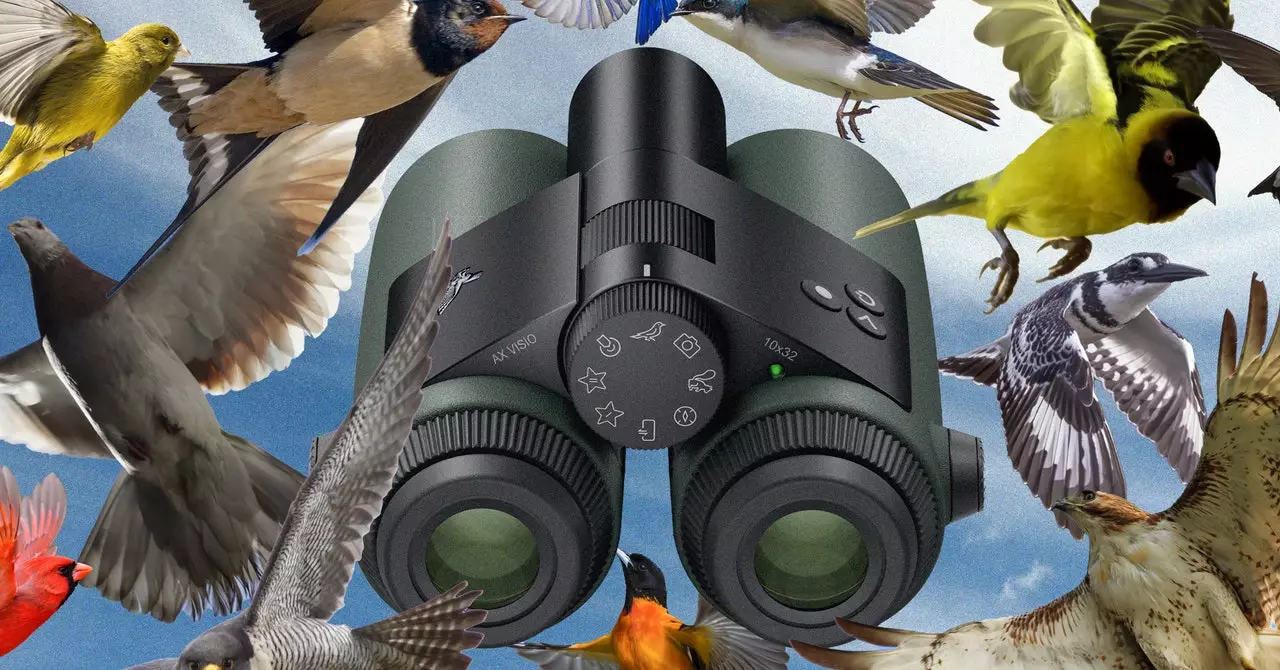In recent years, the integration of technology into traditional hobbies has transformed how enthusiasts interact with nature. One of the most groundbreaking innovations in wildlife observation is the AX Visio binoculars, which utilize advanced software for bird and wildlife identification. By leveraging databases from renowned institutions like the Cornell Lab of Ornithology and the Sunbird database, these binoculars offer a user-friendly yet sophisticated method for enthusiasts to improve their birdwatching experience. This blend of nature appreciation and technology signifies a burgeoning field that marries adventure with innovation.
A fascinating aspect of the AX Visio binoculars is their geographical applicability. While the Mammals ID, Butterfly ID, and Dragonfly ID features are limited to Europe and North America, the Bird ID function operates globally, including some of the most remote locations on Earth, such as Antarctica. This wide-reaching functionality ensures that birdwatchers everywhere can gain insights into various species, irrespective of their location. Such global capacity represents not only functionality but also a commitment to making nature accessible to everyone, which is essential in fostering global conservation efforts.
Testing the AX Visio binoculars in the serene environment of the andBeyond Phinda Private Game Reserve in South Africa, I encountered an initial mix of excitement and trepidation. Despite my lack of technological expertise, the ergonometric design and intuitive features eased my concerns. A straightforward mode-selection wheel allowed seamless navigation through various settings, making it user-friendly even for beginners like me. The accessibility of imparting sophisticated technology within a traditional tool such as binoculars reflects a significant achievement in user interface design.
For the identification process to operate correctly, certain criteria must be met. The binoculars require a steady hand and clear focus to capture a precise image of the target species. A red circle appears in the field of vision when aiming at the subject, indicating a promising area for identification. Once properly aligned, a simple press of a button activates the onboard camera, which, after a brief moment, presents the identified species on the screen. This instantaneous feedback is not only thrilling but also educative, enhancing the birdwatching experience.
During the observational test, the AX Visio binoculars showcased their impressive capability to identify even small birds with astounding precision. For instance, the device successfully recognized a malachite kingfisher, showcasing its proficiency over considerable distances. However, it became evident that limitations exist, particularly when attempting to identify a bee-eater at a greater distance. In another instance, an error message appeared despite the bird’s visibility, leaving a sense of frustration and a reminder that while technology is powerful, it is not infallible. This reality check underscores the need for users to maintain patience and understanding of the technology’s boundaries.
An admirable facet of the AX Visio binoculars is their role in supporting local communities and conservation projects. By being available for rent at a visual wildlife sanctuary, the benefits extend beyond personal enjoyment and knowledge enhancement. The proceeds from rentals directly contribute to the upkeep of local conservation efforts. This community-centered approach not only fosters appreciation for wildlife but also emphasizes the importance of supporting meaningful endeavors aimed at preserving our natural environment.
The AX Visio binoculars represent a significant advance in the realm of wildlife observation, offering both seasoned birdwatchers and novices a new method for engagement with nature. With their combination of cutting-edge technology, user-friendliness, and commitment to conservation, these binoculars not only facilitate thrilling adventures in nature but also promote a deeper understanding of the diverse species that inhabit our planet. As technology continues to evolve, enthusiasts can look forward to even more groundbreaking innovations that will further enrich the experience of exploring the great outdoors.


Leave a Reply